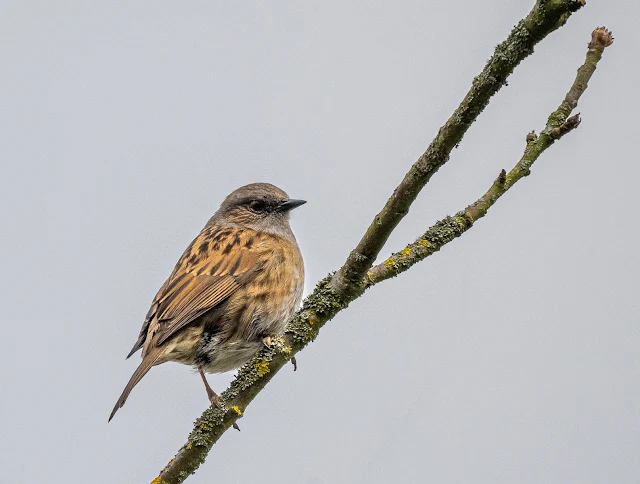I read the book An Idler on the Shropshire Borders covering the period before WW2 by Ida Gandy and it inspired me to go and explore the area for myself. She found a practice for her doctor husband in a small village. She kept a diary and this book is based on her records.
I started in Clunbury a small village with few houses and photographed St Swithun's Church, a single isle church with a 12th century naive. As I walked from the church towards the brook I sighted a Leucistic Sparrow. According to survey data, leucism and albinism occur at a rough estimate of 1 in 30,000 birds. Leucism being more common than albinism. My first sighting! Maybe the Sparrow was not aware of its appearance but I wondered how it would effect breeding. I then heard a bird singing loudly I am not sure if it is a Dunock or a Hedge Sparrow.
Ida walked the area and described the many woodlands and forest areas and her walk to Hopton Castle. Hopton Castle appears more like a home than a fortress, set in a valley, rather than on a hill top and surrounded by a few trees. Most castles are positioned high with clear views and composed of a strong structure with arrow-slits sometimes called balistraria. This narrow vertical aperture permits the archer large degrees of freedom to vary the elevation and direction of their bowshot but makes it difficult for attackers to harm the archer since there is only a small target at which to aim. This castle had many large windows that were designed to have window seats, more a feature for occupants to enjoy the view. I found an interesting article describing the design of the castle. Only the structure of the keep survives.
During the Civil War Hopton Castle was one of the few castles to be held for the Parliament in the west. In 1644 Sir Michael Woodhouse with a force of about 500 laid siege to the castle which was defended by about thirty Roundheads under the command of Samuel More. More eventually agreed terms and surrendered.
At the start of the Civil War (1642-1649) most of Shropshire's inhabitants either supported King Charles I, or remained neutal. However, in this corner of Shropshire and Herefordshire, a small number of landowners supported Oliver Cromwell and Parliament.Amongst those were Robert Wallop a staunch Parliamentarian who owned Hopton Castle, and his neighbours, Sir Robert and Lady Harley held nearby Brampton Bryan Castle as a Parliamentarian stronghold. The Royalists had wanted to control Brampton Bryan Castle and in 1644 made a plan to take Hopton Castle as a base from which to make their attack. Brampton Bryan Castle is now a ruin and only open to the public on Scarecrow Sunday.
The castle may have been founded in the 12th century as a motte and bailey (a European fortification with a wooden or stone keep situated on a raised area of ground called a motte, accompanied by a walled courtyard, or bailey, surrounded by a protective ditch and palisade) by one of the Hoptons as a mesne lord of the Says of Clun Castle, a lord in the feudal system. Walter de Hopton possibly built the stone castle during the Barons' War of the 1260s.
There are varying versions of what happened next. According to More's account all those who surrendered, apart from himself, were killed and buried. Other accounts vary on how the siege ended. They state that after a three-week siege, More delayed surrendering until the bailey had been taken and the entrance to the keep was on fire, at which point the garrison surrendered to Sir Michael Woodhouse, who at his discretion (his prerogative under the laws of war as they were practised at that time), decided not to grant the majority of his prisoners quarter and they were killed by their captors.
This romantic ruin is said to be haunted by the ghosts of soldiers who died in the Civil War.









No comments:
Post a Comment